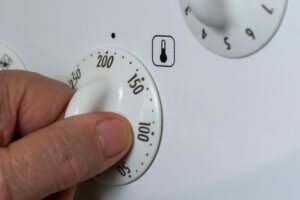Can you save 50% on your fluorescent lighting costs if you remove half your lights?
Last updated on March 10th, 2024 at 03:24 pm
If I remove 2 of the 4 tubes from my overhead fluorescent fixtures, will I actually save 50% on lighting electricity? IOW, when you remove 2 lights from a 4 light fixture do you save half of the energy? I’m wondering how much electricity is wasted in the “conversion” in the ballast, whether or not the tubes are present. My office is too bright anyway. I have “daylight corrected” tubes in a very white and often sunny environment. I’ve already removed all of the inner pairs of tubes and really don’t see a substantial difference in overall lighting quality. In fact it actually seems easier on my eyes. If the tubes complete the circuit and there’s no energy loss just powering ballasts without tubes, then I’ll leave well enough alone! Otherwise, some fixtures have two ballasts, not just one, and I’m wondering if I should disconnect the power to those unused ballasts.
Nice question. In any “normal” situation, reducing the amount of bulbs connected will reduce energy consumption and thus energy costs. In this case, reducing the number of fluorescent bulbs used from 4 to 2 could potentially save about 50% on the lighting costs for that fixture.
But, as you point out, many fluorescent fixtures can’t be considered normal, since they operate differently than normal incandescent sockets. For those who are unaware, a fluorescent fixtures contains something called ballasts. Think of them as voltage regulators. Fluorescent lights are unique in that the more energy or current you pump through them, the more the resistance of the lamp drops. This decrease in electrical resistance means that more current will actually flow through the bulb. And all this shortens the lifespan of the bulb. Ballasts prevent this by regulating the current.
Obviously, the ballasts as the question pointed out are one of the keys to the question.
If the ballasts are the newer (more complex) kind there is probably an electronic circuit programmed to “shut off” power to the ballast should the bulb not ignite. Thus, no power flows through the ballast, if per se, the bulb has burned out.
Check the ballast, and look up some information on it. If it is one of these kinds, you should be okay to remove the bulbs with little worry. Of course, if the fixture is in a high humidity area, you’ll have to watch out to make sure this doesn’t damage the circuitry. In that instance, removing the ballasts altogether or just keeping the bulbs in makes more sense.
You can disconnect the power to the other ballasts, but keep in mind ballasts are often tied in pairs, or assigned 2 bulbs. So two ballasts control two bulbs. Make sure you disconnect the right one. Also, make sure for safety reasons that disconnecting one will not overload the other ballast circuit causing a hazardous condition.
As for the potential power savings, it really depends on the ballast. If the ballast shuts itself off, like newer or more expensive ones do, then the savings can be rather negligible. Otherwise, get the rating of the ballast and *assume* the same current and voltage flows through the ballast when it is on. Calculating the potential savings should then be as easy as Power(w)=VxI.



ligh emitting diodes for home lighting are the best because they consume less electricity-*`
i am using LED lights for our home lighting because they can save my electric bills ;~*
wow this is really nice. Every body use lights at home. This post really help them how to save electricity. Through this type of post we can save lot’s electric power which is very important.
Thank you for your lovely post…………….
There is now a way for all USA cities to retrofit to LED , municipallights.com or Kardings offers a lease to own opportunity that uses a no money out of pocket lease option and actually subsidizes municipalities with a a check upon signing the contract , please have your town, city or village government look at this website.We include LED, Solar LED and induction lamps ,all save at least 50% in electricity cost.
A high-efficiency fluorescent bulb costs about $2-$5 and lasts about 8,000 hours. A 25-watt fluorescent bulb puts out roughly the same amount of light as a 100-watt incandescent light.